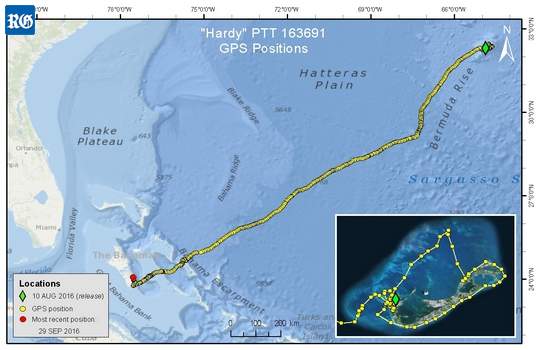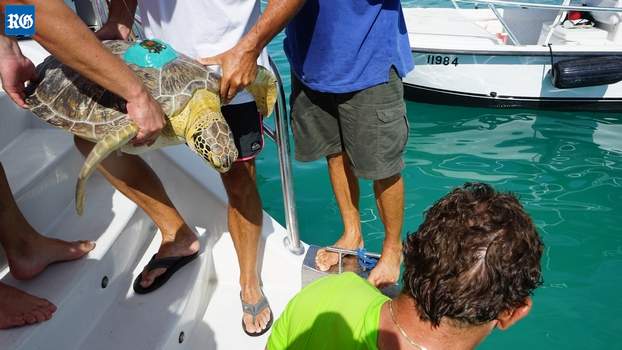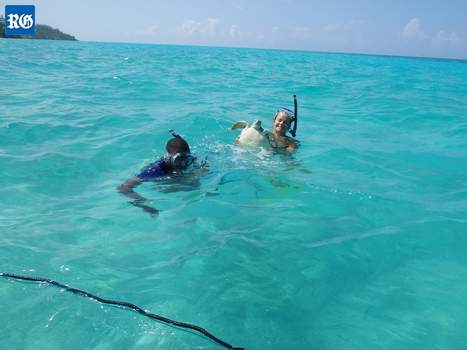Recent News
Azu Beastro: Introducing Arugula and Chef Sam CrewWednesday, July 01, 2015
From the fresh local farm produce, to the fresh herbs being grown right on the café’s patio overlooking Harrington Sound, diners at the Azu Beastro are certain to be delighted with the delectable options being created by the restaurant’s new concession holder, Arugula.
The Trunk Island Campaign: Investing in the Future
Wednesday, July 01, 2015
It was once unusual for the formal education of children to occur anywhere besides within the four-walls of the classroom, but today, there is a broader view on how teaching should occur, taking into account the whole child and diverse learning needs.
Creating Innovative Classes to Enhance School Curriculum
Wednesday, July 01, 2015
There has been increasing interest in educational circles in developing interdisciplinary STEM (Science, Technology, Engineering and Math) programmes that not only teach students about scientific method in the classroom, but also how it can be applied in real life experiences.
Curator’s Corner
Wednesday, July 01, 2015
Firstly, we’d like to thank you for your patience over the last several months. The replacement of the Aquarium roof has gone very well and we’re extraordinarily happy with the end product.
Scholarship recipient tracking Longtails
Wednesday, July 01, 2015
BZS/Steinhoff Scholarship recipient Miguel Mejias, a Biology student at Memorial University in St. John’s, Newfoundland, has been undertaking some very interesting and exciting research on White-tailed Tropicbirds (Phaethon lepturus catesbyi), better known to most Bermudians as the “Longtail”.
About
GovernanceAbout Us
Newsletter
Latest News
Gift & Bookstore
Contact
General Inquiries
info@bzs.bm
Latest News
All the latest updates and news from the Bermuda Aquarium, Museum, and Zoo, one of Bermuda's leading visitor attractions!
Published Apr 13, 2017 at 1:09 pm (Updated Apr 19, 2017 at 7:09 am)

Hardy the green turtle's journey to the Bahamas (Image supplied)
A satellite transmitter crucial to the Bermuda Turtle Project has been found by a reef diver in the Bahamas.
The equipment was used to chart the progress of Hardy, a green turtle who swam 1,000 miles from Bermuda to the Caribbean country last year.
It had been missing since September after Hardy had reached Andros Island, and was found again after a collaborative effort involving a dozen people from Bermuda, the Bahamas and the United States.
According to the Bermuda Zoological Society, the recovery has enabled them to put together a “remarkably complete” track of Hardy’s migration — although the turtle’s whereabouts today remains a mystery.
The Turtle Project, a joint effort between BZS and the Sea Turtle Conservancy, aims to promote the conservation of turtles through research and education.
Describing Hardy’s progress, BZS said: “What was thought to be his final satellite location was recorded on September 29 at the southeastern end of Andros Island.
“Hardy appeared to be continuing his migration when this transmission was received. Why the transmissions stopped was not clear.
“To everyone’s surprise, after nearly two months of silence, the transmitter began sending location data again on November 27.
“Using Google Earth, BTP team members Robert Hardy and Anne Meylan could see from their office at the Florida Fish and Wildlife Research Institute in St Petersburg that all of the transmissions appeared to be coming from a house in the community of Bluff Settlement, a remote village on the southeastern coast of Andros Island.
“Recovering the transmitter would potentially mean recovering additional data, and also that this valuable GPS-enabled transmitter could be refurbished and used again.
“The team contacted Alan Bolten of the Archie Carr Centre for Sea Turtle Research to try to find a contact in the Bahamas who could investigate.

Photograph supplied
“Alan put the team in touch with Liz Brace of the Bahamas National Trust in Nassau, who in turn contacted one of the trust’s wardens, Steve Smith, based on Andros Island.
“A flyer was produced and distributed in Bluff Settlement, showing the approximate location of the turtle’s signal and seeking the community’s assistance in locating the transmitter.
“Weeks passed, and the BTP team was concerned that the battery on the unit would soon expire, greatly reducing the likelihood that the transmitter would be recovered.
“However, there was not much to do besides wait. On December 19, Anne received an e-mail from Patrick Talbot, Curator of the Bermuda Aquarium, Museum and Zoo.
“He had just spoken by phone with McRoy Wilson, manager of the Andros office of the Bahamas Ministry of Tourism, who reported that the satellite tag was now in his office at the tourism department on Andros.
“Mr Wilson had been contacted by the Bahamas National Trust warden and had retrieved the transmitter, then found Patrick’s phone number on the message glued to it.
“Patrick passed Mr Wilson’s contact information to Anne and she called him immediately. Mr Wilson confirmed that he had the tag and reported that it had been found by a diver on a reef along the east coast of Andros.
“This was consistent with the depth data transmitted by the tag when it was brought to the surface and resumed transmitting — the tag had been at about 20 feet below the surface the entire time it was not transmitting. No other details about the tag’s recovery were available.”
The transmitter was then taken to the lab in St Petersburg, where any untransmitted data could be downloaded.

Photograph supplied
“There is a limited commercial airline service connecting the east coast of Andros with the United States but Mr Wilson had a quick solution — a small airline called Watermakers Air that lands at an airstrip close to his office on Andros,” said BZS.
“A call to Jennifer Valencia at Watermakers was all it took to arrange pick up at Congo Town airport the following morning, and delivery a few hours later at an airport in Fort Lauderdale. Jennifer called to report the transmitter’s safe arrival and shipped it to the Florida Fish and Wildlife Research Institute in St Petersburg.
“The tag was a bit battered but still entirely functional. Robert Hardy, for whom the turtle had been named, downloaded the data stored on it and discovered that a large amount of information had remained on the tag — not just from the final days of deployment, but from the entire journey Hardy made from Bermuda to the Bahamas.
“The number of GPS co-ordinates for the travel path for this turtle increased from 365 to 785.
“With the added points, a remarkably complete track of the animal’s migration could be mapped. In addition to location data, the transmitter also recorded data on depth, temperature, and diving behaviour.
“The fate of the turtle Hardy remains unknown, but because of the remarkable collaboration of people from the Bahamas, Bermuda and the US, the satellite transmitter and some extremely important data on sea turtle migration were safely recovered. A big thanks to all.”


